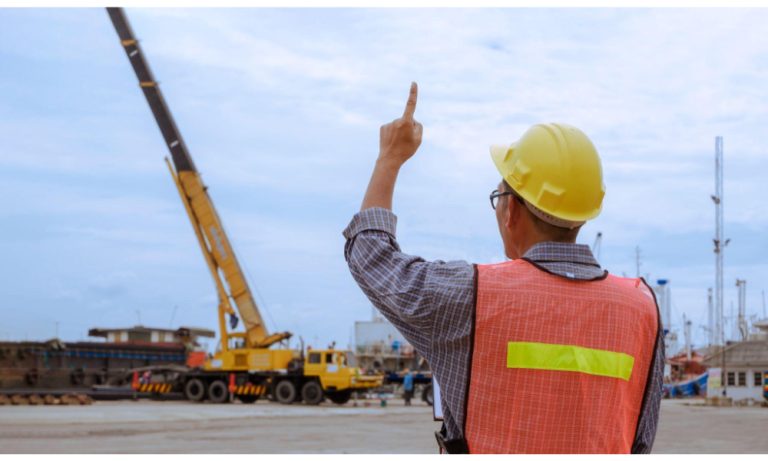History is full of lessons, some written in textbooks, others in the aftermath of accidents that changed how we work forever. In the world of construction and heavy industry, each incident involving lifting operations has shaped stricter rules, better training, and a stronger culture of safety. Designed as part of the nation’s broader WSQ training courses, the lifting supervisor course is about learning from history’s hard-won lessons to prevent tomorrow’s accidents.
From Trial and Error to Training and Standards
Before formal regulations existed, lifting operations were often carried out through instinct and experience. Decades ago, cranes and hoists operated with no formal risk assessments, no dedicated supervision, and minimal safety gear. In the early years of Singapore’s industrial growth, numerous accidents involving crane collapses, load drops, and rigging failures underscored the urgent need for stricter supervision and competent leadership on-site.
These incidents paved the way for structured education and safety regulation. The lifting supervisor course is a structured programme ensuring that supervisors understand both the science and responsibility behind every lift.
The Historical Turning Point
In the past, lifting operations were often coordinated by workers without a clear hierarchy or standard operating procedures. Miscommunication between the crane operator, signalman, and rigging team led to errors when time pressure or fatigue came into play. Historical case studies show that the lack of a designated lifting supervisor was often the missing link between planning and execution. Without one, site safety became reactive rather than preventive.
The lifting supervisor course emerged to close this gap. Supervisors evaluate lifting plans and load conditions, conduct risk assessments before operations, ensure the competency of lifting personnel, and react quickly during emergencies.
Learning from Past Accidents
Each safety regulation today is rooted in an event that taught the industry a painful lesson. For example, global construction accidents in the 1980s and 1990s often involved simple oversights, such as misjudged load weights, poor rigging angles, or environmental conditions like wind that weren’t accounted for.
In Singapore, the Ministry of Manpower (MOM) began tightening regulations after a series of high-profile incidents involving cranes and hoisting equipment. The lifting supervisor course was built on these principles, offering professionals hands-on experience in hazard recognition, site management, and coordination. Through both theory and practical exercises, participants learn to anticipate problems before they occur.
The Evolution of WSQ Training Courses
Singapore’s WSQ training courses are part of a long-term effort to develop a competent, safety-conscious workforce across industries. The Workforce Skills Qualifications (WSQ) system, introduced in 2005, revolutionised skills training by standardising courses and aligning them with real-world demands.
The lifting supervisor course falls within the Construction WSQ Framework. By embedding lessons from decades of accidents and audits, WSQ ensures that training remains relevant, practical, and forward-looking. Each course module reflects accumulated expertise, from load distribution physics to emergency response drills. This structured approach helps ensure that workers at every level, from riggers to supervisors, can operate safely and efficiently with Singapore’s stringent safety laws.
Human Factors and Cultural Change
If history has one recurring lesson, it’s that safety is about the people. Many accidents over the years weren’t caused by mechanical failure, but by human factors such as complacency, fatigue, or overconfidence. The lifting supervisor course addresses this by focusing on leadership and communication as much as technical skill.
Trainees are encouraged to foster a culture where safety is seen as a shared responsibility, not a checklist. By understanding behavioural safety, supervisors can intervene early. This psychological awareness of modern WSQ training courses is a reminder that safety evolves through technology and mindset shifts.
How Modern Supervisors Apply Lessons from the Past
Every risk assessment they conduct, every safety briefing they lead, and every checklist they complete is built upon decades of accumulated knowledge. Supervisors can integrate these lessons directly into their daily routines.
Before lifting begins, review load charts, equipment limits, and weather conditions. During lifting, maintain clear communication and visual contact with operators and signalmen. After lifting, conducting debriefs and logging performance data to improve future operations. Each of these actions may seem routine, but collectively, they prevent the types of catastrophic events that once plagued worksites.
The Past Guides Every Lift We Make
Behind every safe lift is a history of lessons learned the hard way. The lifting supervisor course represents decades of evolution, translating tragedy into training and experience into expertise. By embracing the structured learning of WSQ training courses, today’s supervisors honour the workers, engineers, and pioneers who shaped the safety standards we rely on today. Because when it comes to lifting operations, safety is never optional, and learning is never finished.
Ready to build on history’s lessons? Enrol at Avanta Academy today and join Singapore’s mission to lift smarter, safer, and stronger.

